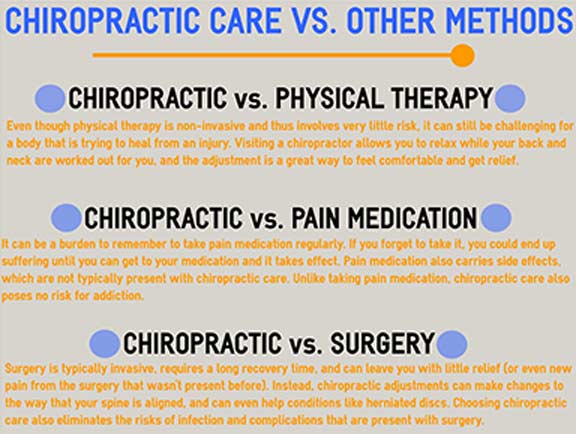If you're experiencing neck and back pain, your body may be trying to inform you something greater than simply discomfort. The method your back really feels can give important clues concerning your total well-being. Comprehending the particular type of discomfort you're really feeling and any accompanying signs and symptoms is key to unwinding the enigma behind your discomfort. Let's discover the typical problems and symptoms associated with different sorts of back pain to shed light on what your body may be signaling.
Sorts Of Neck And Back Pain
When it concerns back pain, there are different types that you may experience. One common type is muscle pain, commonly caused by overuse, pressure, or injury to the muscle mass and tendons supporting the back. This kind of discomfort can range from mild discomfort to severe and devastating discomfort.
Another kind is nerve pain, which can arise from problems like herniated discs or sciatic nerve pain. https://chiropractic-injury-clini83949.sharebyblog.com/31099827/explore-the-science-of-chiropractic-exploring-the-process-of-spinal-modification offers as a sharp, shooting experience that emits down the leg.
Joint discomfort in the back can stem from issues like joint inflammation or sacroiliac joint dysfunction. https://familychiropractichealthc50504.jaiblogs.com/58221884/the-scientific-research-of-chiropractic-care-just-how-adjustments-effect-the-nervous-system of discomfort is generally really felt in the lower back and can be exacerbated by specific activities.
In addition, back pain can be related to structural problems such as spinal constriction or vertebral cracks. Recognizing the sort of pain in the back you're experiencing is vital in identifying the appropriate therapy and administration strategies.
Common Symptoms to Look For
Moving past the different types of pain in the back, it is necessary to identify the common symptoms that can signify underlying issues.
Relentless pain in the back that aggravates with activity or during the night might show a much more severe problem. Feeling numb or tingling in the legs or feet, particularly when accompanied by weak point, might point to a nerve-related concern. If you experience unexpected fat burning along with back pain, maybe an indicator of a much more systemic condition.
Take notice of any adjustments in bladder or bowel feature, as this could be linked to spinal cord compression. Fever, cools, or evening sweats together with neck and back pain may indicate an infection. Watch out for discomfort that emits down one or both legs, potentially a sign of sciatic nerve pain.
Wellness Issues Linked to Pain In The Back
If you struggle with neck and back pain, it's crucial to comprehend the possible health problems connected to this discomfort. Back pain can be a sign of different underlying issues, including muscle mass stress, herniated discs, osteoarthritis, spine constriction, and also problems like kidney stones or infections.
Muscle mass pressures prevail and usually arise from raising heavy objects or abrupt activities.
Herniated discs take place when the soft tissue between vertebrae protrudes, causing nerve irritability.
Osteoarthritis, a degenerative joint disease, can result in pain in the back as cartilage material wears down.
Spine stenosis, the narrowing of the back canal, can tax nerves.
visit this web page link may create intense neck and back pain if they move right into the urinary system system.
Infections like spinal osteomyelitis can likewise materialize as neck and back pain. Understanding these possible health and wellness conditions can help you seek proper treatment and monitoring for your pain in the back.
Conclusion
So, next time your back injures, take notice of the type of pain and coming with signs. Maybe a signal from your body about underlying health problems like muscular tissue strain, nerve issues, joint troubles, and even architectural concerns. By identifying these indications, you can take proactive steps to attend to the root cause of your back pain and enhance your overall health and health.
